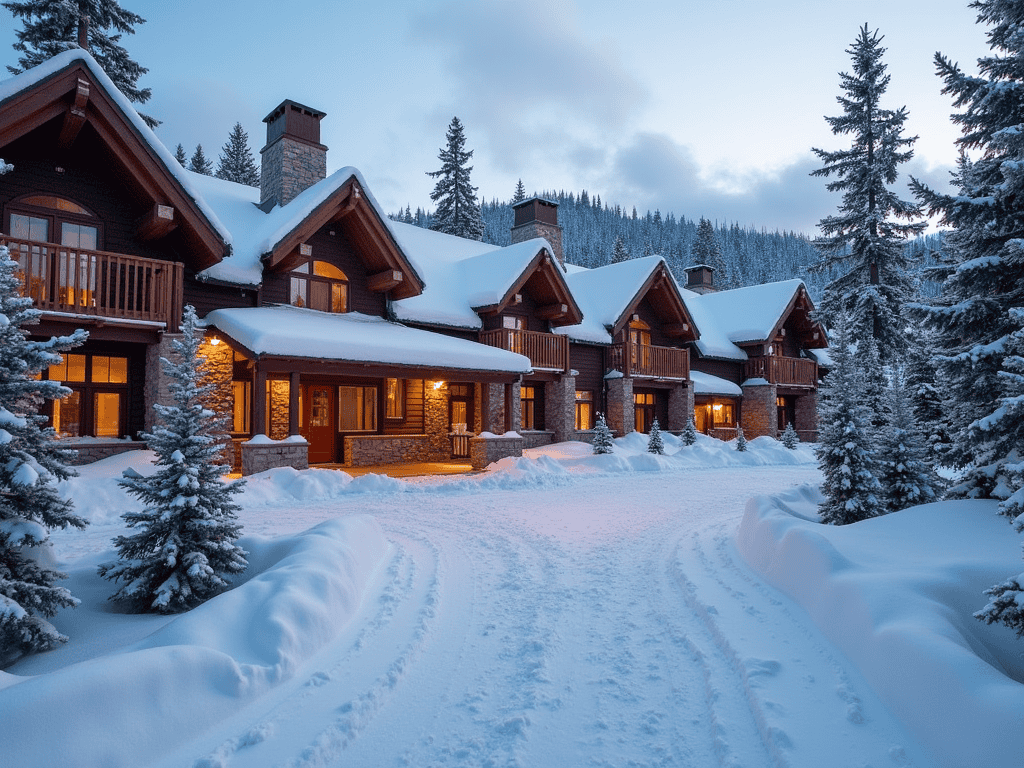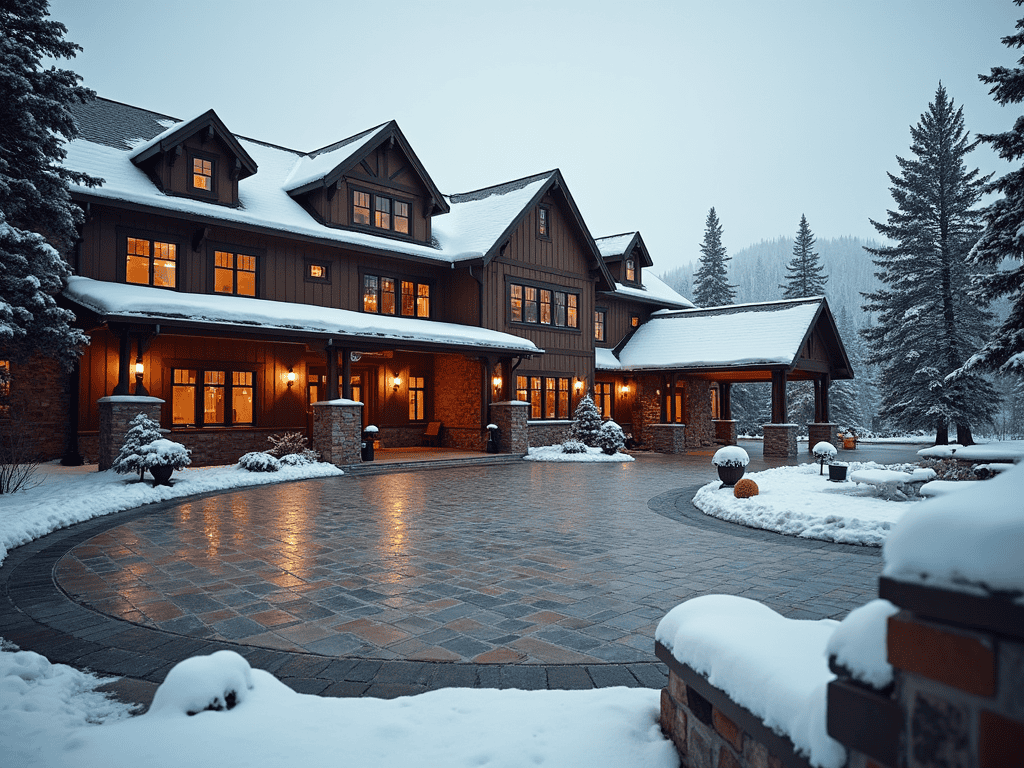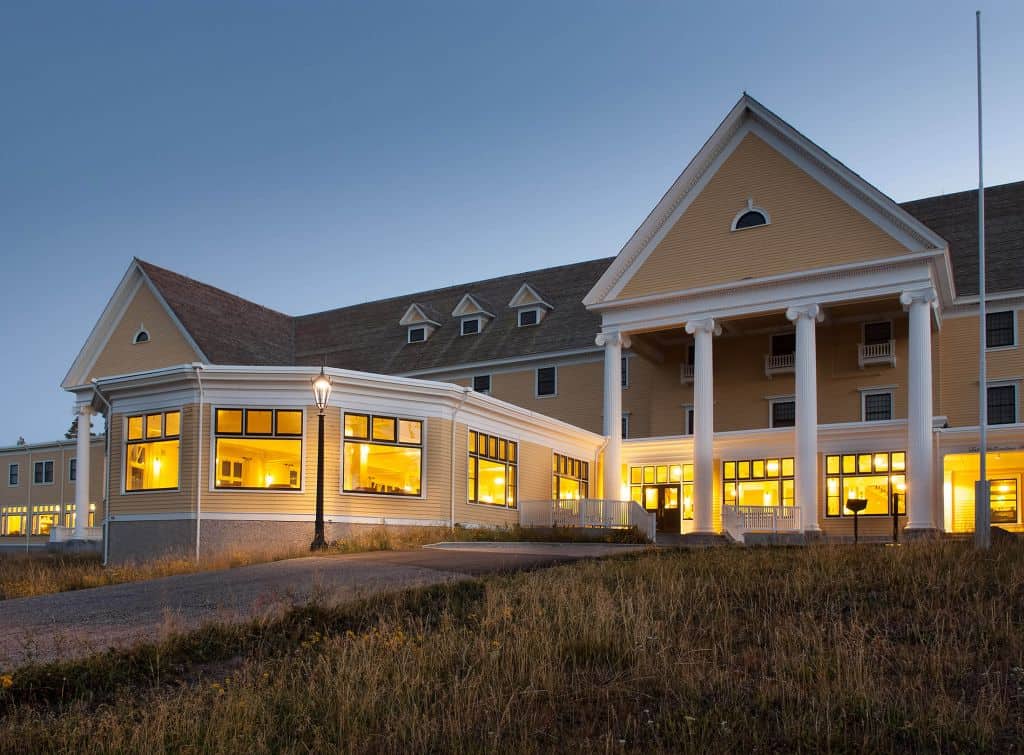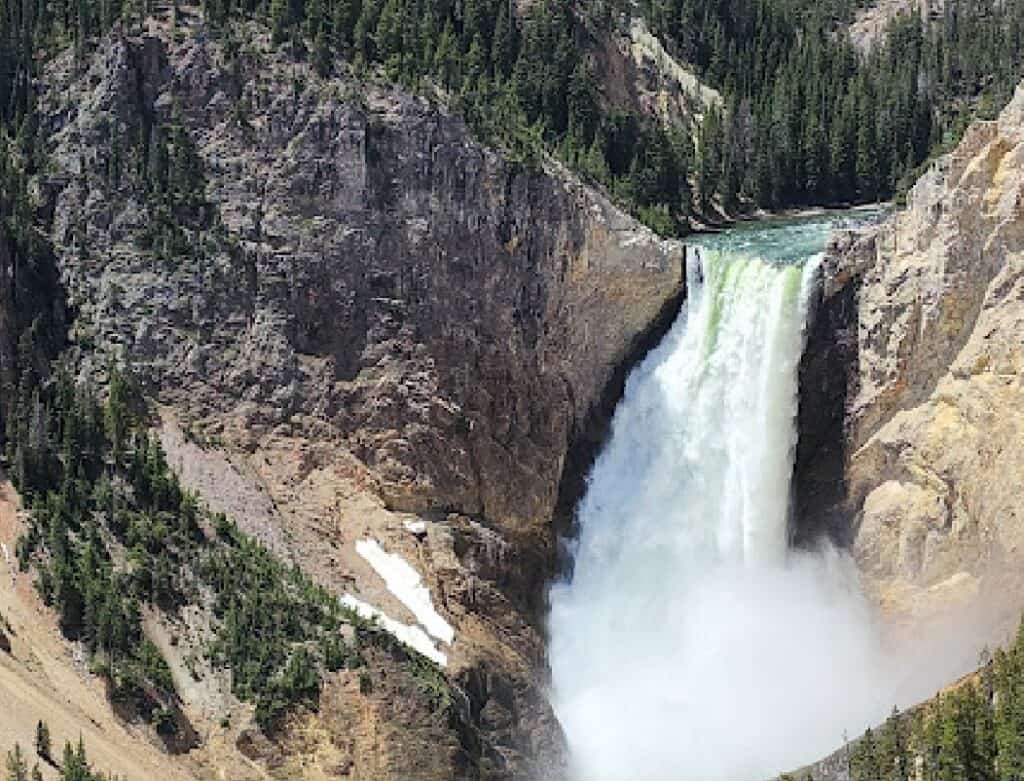Mammoth Hot Springs Hotel and Cabins is a historic lodging facility located in Yellowstone National Park, offering visitors a unique and comfortable stay experience within the park’s boundaries.
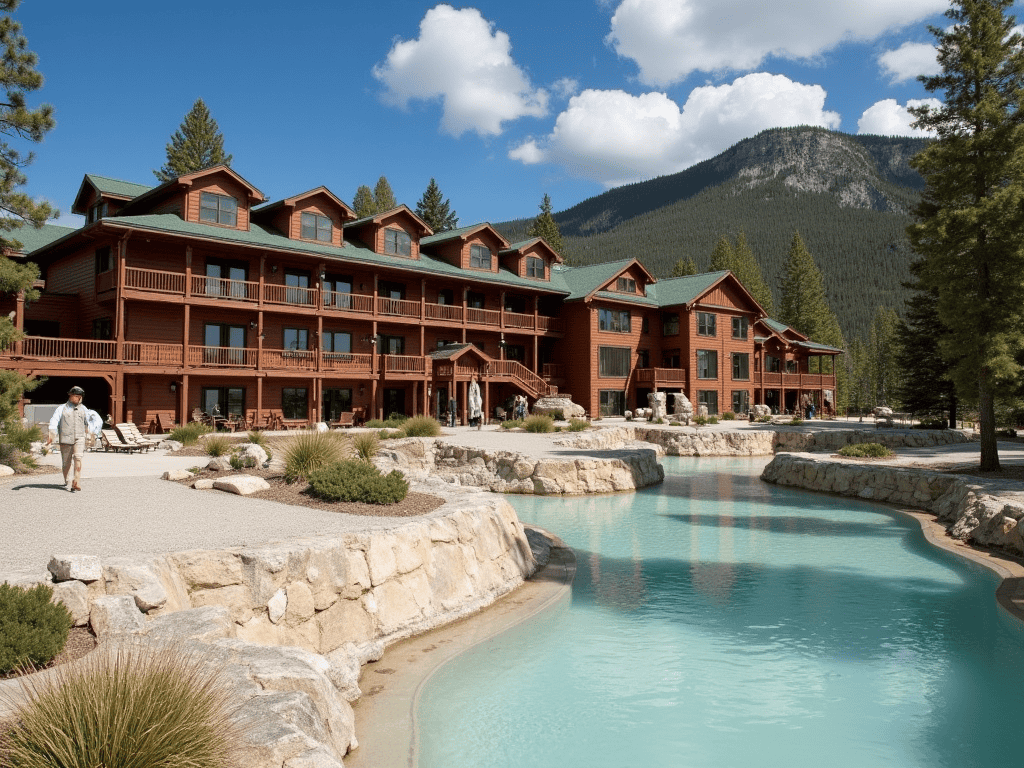
Location and History
The hotel is situated near the Mammoth Hot Springs terraces, close to the park’s north entrance. Originally built in 1936, it retains a wing of guest rooms from 1911 and features the signature Map Room, which contains a large wooden map of the United States constructed from 15 different types of wood sourced from 9 countries.
Accommodation Options
The hotel offers a variety of lodging choices to suit different preferences and budgets:Hotel Rooms:
- Suites: Feature 2 queen beds, a separate sitting room, and satellite TV (unique among in-park rooms)
- Deluxe Rooms: Offer 1 king bed, 1 queen bed, or 2 queen beds with full bathrooms
Cabins:
- Frontier Cabins: Include 2 queen beds and a private bathroom
- Hot Tub Cabins: Feature 1 queen bed, a private bathroom, and a 6-person hot tub in an enclosed patio
- Cabins without Bath: Have 1 queen bed and shared bathroom facilities nearby
- Two-Room Cabins without Bath: Offer 1 queen bed and 2 double beds with shared bathroom facilities
Amenities and Services
- Dining options include the Mammoth Hotel Dining Room and Terrace Grill
- Map Room Bar for drinks and relaxation
- Gift shop and activities desk
- Limited WiFi available in guest rooms and public areas
- Ski and snowshoe rentals during winter season
- Electric vehicle charging stations
Accessibility
The hotel provides accessible rooms and cabins, as well as wheelchair loans for guests. Some areas may require assistance for wheelchair users due to architectural features.
Seasonal Operation
- Summer season: Generally from late April to mid-October
- Winter season: Typically from mid-December to early March
Booking Information
Reservations can be made by calling 307-344-7311 or 866-439-7375, or through the official Yellowstone National Park Lodges website.Mammoth Hot Springs Hotel and Cabins offers visitors a chance to immerse themselves in the natural beauty of Yellowstone while enjoying comfortable accommodations with a touch of historical charm.
What are the best activities to do around Mammoth Hot Springs Hotel and Cabins?
Mammoth Hot Springs Hotel and Cabins offers visitors a wide range of activities to enjoy in the surrounding area. Here are some of the best things to do:
Explore Natural Wonders
Walk the Mammoth Terraces Boardwalk
Take a stroll on the boardwalks above the steaming hydrothermal features of the Mammoth Hot Springs terraces. This unique geological area showcases vibrant travertine formations and offers a fascinating glimpse into Yellowstone’s geothermal activity.Drive the Upper Terrace Loop
For a scenic drive, take the one-mile Upper Terrace Drive. This loop provides views of the Main Terraces, Fort Yellowstone, and the Gardner River, as well as up-close looks at hydrothermal features like Orange Spring Mound.
Wildlife Viewing
Observe Elk
Mammoth Hot Springs is known for its resident elk population. You can often spot these majestic animals grazing around the hotel grounds and throughout the area. Remember to maintain a safe distance of at least 25 yards.Wildlife Watching in Lamar Valley
Take a trip to nearby Lamar Valley, often called “America’s Serengeti,” for excellent opportunities to see bison, wolves, and other wildlife.
Historical and Educational Activities
Visit the Albright Visitor Center
Located in the historic Fort Yellowstone, the Albright Visitor Center offers exhibits on park history and wildlife. You can also get your National Parks Passport stamped here and pick up Junior Ranger booklets for kids.Tour Historic Fort Yellowstone
Explore the well-preserved buildings of Fort Yellowstone, which date back to when the U.S. Army managed the park. Many of these structures are still in use today.
Outdoor Recreation
Hiking
There are numerous hiking trails in the Mammoth area suitable for various skill levels. Popular options include the Bunsen Peak trail and the old Bunsen Peak road, which is also open to mountain bikers.Winter Activities
In the winter season, enjoy cross-country skiing and snowshoeing. The Bear Den ski shop at the hotel offers equipment rentals, lessons, and guided tours.
Relaxation and Dining
Soak in Yellowstone Hot Springs
Just outside the park in Gardiner, Montana, you can relax in the Yellowstone Hot Springs, which offer pools of varying temperatures. Dine with a View
Enjoy a meal at the Mammoth Hotel Dining Room, where you might spot wildlife through the windows while savoring your food.
What wildlife can be spotted around Mammoth Hot Springs?
- Elk: Elk are commonly seen in the Mammoth Hot Springs area, especially during the fall rutting season. They can often be spotted grazing around the hotel grounds and throughout the area.
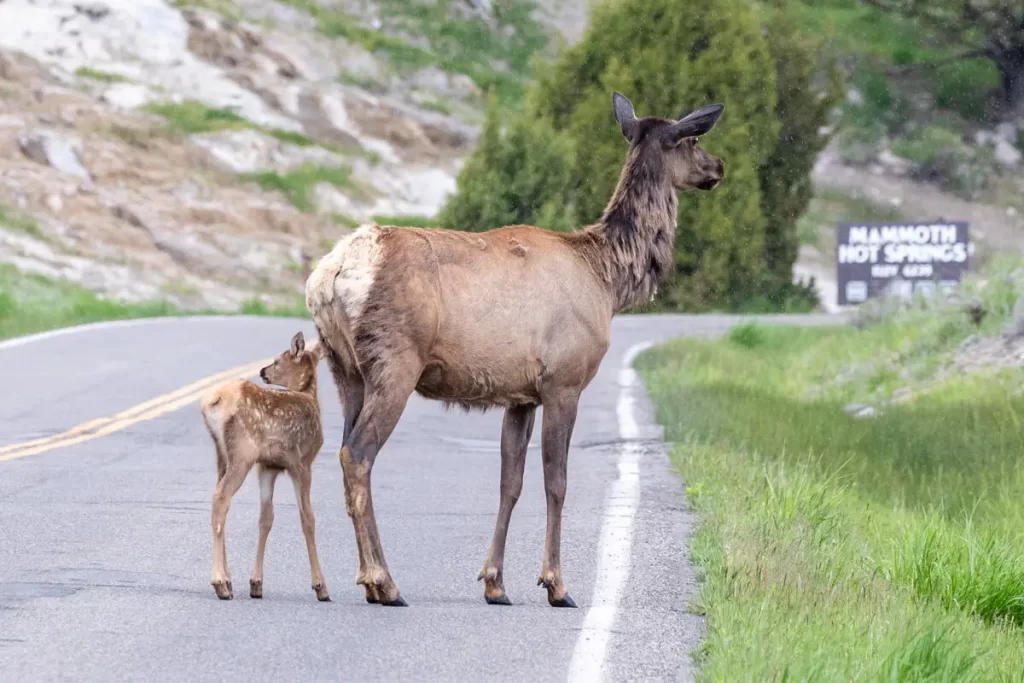
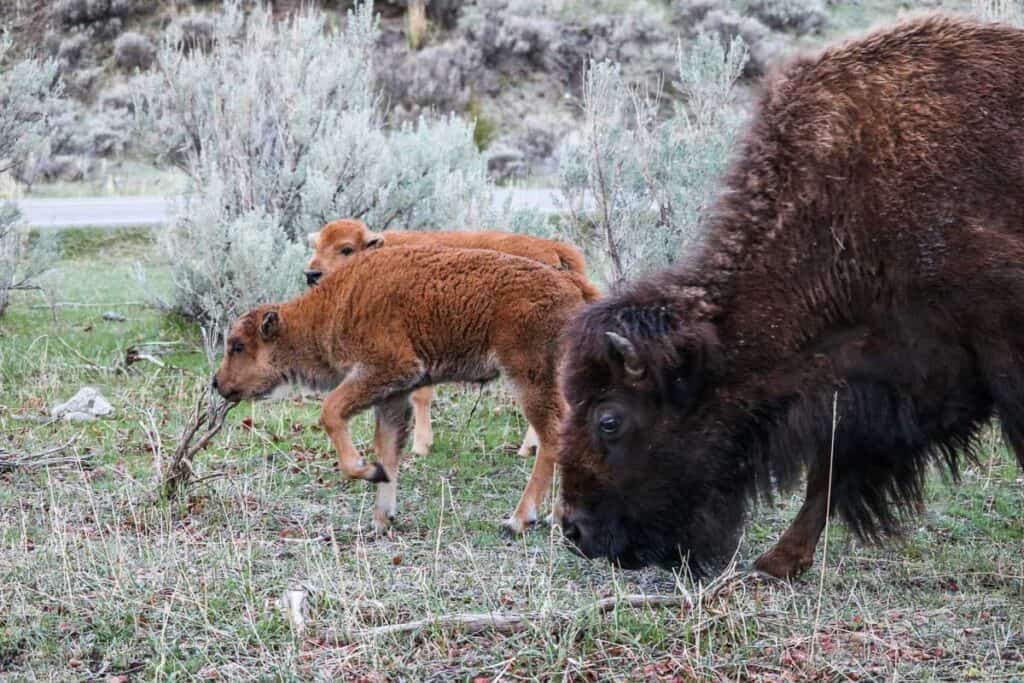

- Uinta Ground Squirrels: Look for these small mammals in front of the visitor center and among the hotel cabins during summer.

- Birds: Various bird species can be observed, including:
- Coyotes: While not specifically mentioned for Mammoth, coyotes are relatively common in Yellowstone and might be seen in the area.
- Wolves: Although more commonly spotted in Lamar Valley, wolves have territory throughout the park and might occasionally be seen between Mammoth Hot Springs and Lamar Valley, especially in winter.
- Bears: While not mentioned specifically for Mammoth, both grizzly and black bears inhabit Yellowstone and could potentially be seen in the area, especially in spring when they emerge from hibernation.

